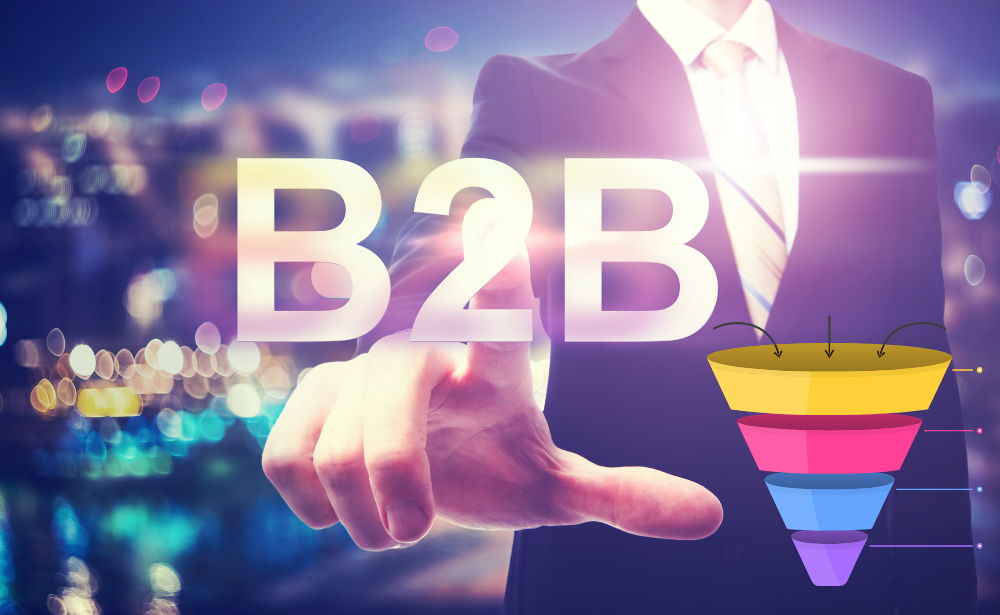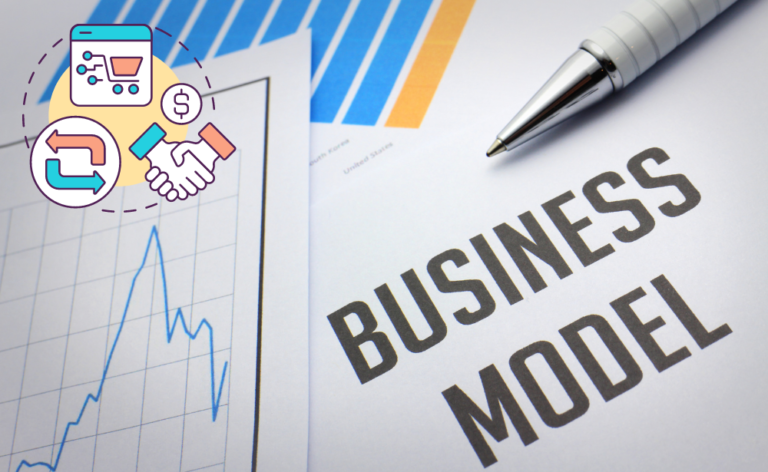Building a high-converting sales funnel for a B2B business requires a deep understanding of your target audience. It’s more than just knowing what they do—it’s about pinpointing their pain points and tailoring your content to provide solutions. If you understand your audience well, you can guide them through each stage of the funnel effectively, increasing the chances of conversion.
In this guide, we’ll go through the steps of constructing a B2B funnel that not only brings in leads but also moves them smoothly toward becoming paying customers.
Key Takeaways
- Learn the specific needs and challenges of your target audience to create a tailored B2B funnel.
- Build valuable lead magnets that address your audience’s pain points and motivate them to engage.
- Optimize landing pages with clear messaging, strong visuals, and persuasive calls-to-action to boost conversions.
- Develop targeted email campaigns to nurture leads and maintain consistent engagement.
- Use analytics to monitor and refine your funnel for maximum efficiency continuously.
Learn About Your Customer Needs
Understanding your target audience is the first step in building an effective B2B sales funnel. In a B2B context, you’re often dealing with multiple decision-makers, which makes it critical to know exactly who you are targeting and what motivates them.
Know Your Audience’s Pain Points and Motivations
Instead of guessing, start with research. Identify the key decision-makers in your industry—are you speaking to CFOs, marketers, or operations managers? Each role will have different challenges and concerns. Use tools like LinkedIn Sales Navigator to understand their roles better, and conduct surveys through platforms like SurveyMonkey to gather insights directly from potential customers.
The biggest question you need to answer is: What problems are they trying to solve? Once you know their pain points—whether it’s cost reduction, efficiency improvements, or new technology adoption—you can frame your solution in a way that speaks directly to their needs.
Also, consider their buying behaviour. Do they rely on detailed product comparisons? Are they influenced by case studies or customer testimonials? Understanding this helps you shape your marketing content and the resources you offer.
Segment Your Audience for a Personalized Experience
B2B buying decisions are often complex, so segmentation is crucial. By dividing your audience into specific groups based on industry, company size, job role, or pain points, you can tailor your messaging and approach. For example, what appeals to a small tech startup won’t resonate with a large manufacturing firm.
Use tools like HubSpot or Salesforce to segment your audience and deliver personalized content at every stage of the funnel.
Create Compelling Lead Magnets
Once you know your audience, the next step is attracting them with lead magnets. A lead magnet is a valuable resource you offer in exchange for a prospect’s contact information—something they genuinely want.
Types of Lead Magnets for B2B
In B2B, lead magnets typically include white papers, eBooks, webinars, case studies, or checklists. The key is to offer resources that solve a problem or address a specific challenge your target audience is facing.
For example, if you’re targeting marketing professionals, a white paper on “Emerging Trends in Digital Marketing” could be a powerful lead magnet. Similarly, for IT decision-makers, an eBook on “Cybersecurity Best Practices” might resonate.
Make your lead magnets highly relevant to your audience. If you’re struggling to come up with ideas, explore industry forums and LinkedIn groups, or use BuzzSumo to see what topics are trending in your niche.
Once created, promote these lead magnets on multiple channels—your website, email campaigns, and social media platforms like LinkedIn and Facebook. Tools like ClickFunnels can help you easily build and promote these assets.
Optimize Landing Pages for Conversions
Your landing page is where the magic happens. It’s often the first place potential leads will engage with your brand, so you need to make sure it’s optimized for conversions.
Key Elements of a High-Converting Landing Page
- Clear and Concise Headline: The headline should immediately communicate the value of what you’re offering. For example, “Download Our Free White Paper on AI in Supply Chain Management” tells the visitor exactly what they’ll get.
- Engaging Visuals: Use images or videos that support your message. A video explaining the benefits of downloading your resource or a product demo can make a significant impact. However, ensure your visuals are not overwhelming.
- Strong Call-to-Action (CTA): The CTA is where you ask visitors to take action—whether it’s downloading a resource, signing up for a webinar, or requesting a demo. Use clear, action-oriented language like “Get Your Free Guide” or “Sign Up Now.” Make the button stand out visually from the rest of the page.
- Simplicity: Keep your landing page simple and focused. Remove any distractions or unnecessary links that might lead visitors away. Too much clutter can overwhelm and confuse, lowering your conversion rates.
- Mobile Optimization: Many users will access your landing page on mobile, so your page must be mobile-friendly. Use responsive design so the layout adjusts based on screen size.
Tools like Unbounce or Leadpages can help you build optimized landing pages that convert.
Implement Effective Email Campaigns
Once you’ve captured a lead’s contact information, your work isn’t done. You need to nurture those leads through well-crafted email campaigns that build trust and keep your brand at the top of your mind.
Segmentation for Better Email Engagement
Not all your leads are the same, so don’t treat them as such. Segmenting your email list allows you to send targeted, relevant content to different groups based on their interests or position in the buying process. For example, leads who are new to your funnel might appreciate educational content, while those closer to making a decision might prefer case studies or product comparisons.
Here’s a simple breakdown of how you might segment your list:
| Segment | Targeted Strategy |
|---|---|
| New Leads | Send introductory content or eBooks |
| Engaged Prospects | Share case studies and success stories |
| Inactive Leads | Offer exclusive discounts or incentives |
Tools like Mailchimp and ActiveCampaign can automate these campaigns, helping you stay engaged with leads without manually sending emails each time.
Automate Follow-Up Sequences
Automating follow-up sequences ensures you stay in touch with leads consistently. If someone downloads your lead magnet, follow up with an email that offers related content, such as a case study or webinar invite. This helps move them further down the funnel.
Automated tools like HubSpot or Drip allow you to set up these workflows. You can even segment your list based on user actions—those who opened your email get one follow-up, while those who clicked through receive another.
Nurture Leads Through Content
Engaging leads with educational content is crucial in B2B sales funnels. Your prospects might take weeks or months before making a decision, and during that time, you need to keep providing value to stay relevant.
Use Educational Content to Build Authority
B2B customers are often looking for thought leadership and industry expertise. You can build authority by sharing educational content like blog posts, white papers, webinars, and case studies.
Create a content calendar where you consistently release industry insights, how-to guides, or data-driven reports. A resource hub on your website is a great place to store all this content. If you keep offering helpful, educational content, leads will return to your site over and over again.
Leverage Social Media for Engagement
Social media, especially LinkedIn, is an essential tool for B2B businesses. Use platforms like Hootsuite or Buffer to schedule and manage your posts. Share your educational content, engage with industry discussions, and respond to your followers’ questions.
Regular social media activity builds brand awareness and strengthens your relationship with potential customers over time. It also reinforces the content they may have already seen in emails or on your website.
Analyze Funnel Performance
Without data, it’s impossible to know if your funnel is working. Regularly tracking key metrics will allow you to refine your funnel and eliminate weak spots.
Important Metrics to Monitor
- Conversion Rates: How many visitors turn into leads, and how many leads turn into paying customers? Tools like Google Analytics can track these conversions.
- Lead Quality: Not all leads are equal. Keep track of where your best leads are coming from so you can focus your marketing on high-quality sources. Use HubSpot to manage and track lead quality.
- Time in Funnel: Are leads taking too long to move through your funnel? If prospects are getting stuck at a certain stage, it’s time to figure out why. Perhaps your messaging isn’t clear, or your follow-up emails are poorly timed.
- Drop-Off Points: Identify where potential customers are abandoning the funnel. If you notice leads dropping off after a webinar sign-up, perhaps your post-webinar content isn’t engaging enough.
Tools like Trello and Google Optimize can help track and manage your funnel’s performance.
Refine and Scale Your Funnel
Once you’ve optimized your funnel, it’s time to scale. This means finding ways to drive more traffic to the top of the funnel and ensuring your process can handle the volume.
Scaling Strategies for Your Funnel
- Paid Advertising: Platforms like Google Ads or LinkedIn Ads can help you target specific audiences and bring more leads into your funnel.
- Partnerships and Referrals: Partner with complementary businesses to expand your reach. Affiliate marketing or strategic partnerships can drive new leads to your funnel without significant investment.
- Content Repurposing: Repurpose your high-performing content into different formats—turn a blog post into a webinar or an eBook into a video series. This allows you to engage leads on different platforms and through varied content types.
Frequently Asked Questions
What Tools Can Help Automate My Sales Funnel?
You can automate your sales funnel using tools like HubSpot for CRM, Mailchimp for email marketing, and Zapier for automating workflows between different platforms.
How Do I Set a Budget for My Sales Funnel?
Break down the costs for tools, paid advertising, and personnel when setting your budget. Adjust based on your funnel’s performance to ensure you’re getting the most out of your investment.
What Metrics Should I Focus on for My B2B Funnel?
Key metrics include conversion rates, lead quality, customer acquisition cost, and customer lifetime value. These metrics provide a clear picture of your funnel’s effectiveness.
How Long Does It Take to Convert Leads in a B2B Funnel?
The time varies depending on your industry and product, but expect the process to take anywhere from several weeks to a few months. Nurturing your leads with consistent, valuable content can speed up this process.
How Often Should I Update My Sales Funnel?
Revisit your sales funnel every six months. Regular updates based on performance data will help you stay ahead of any issues and continue to improve your conversion rates.
Conclusion
Building a high-converting sales funnel for your B2B business involves more than just getting leads—it’s about understanding your audience and guiding them through a process that provides value at every step. From identifying pain points and creating relevant lead magnets to optimizing landing pages and running targeted email campaigns, every part of your funnel should work together seamlessly.
By continuously analyzing and refining your funnel, you’ll increase conversions and scale your business effectively. Start implementing these strategies today to take your B2B sales funnel to the next level!







